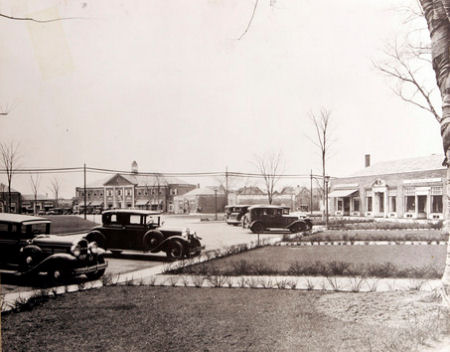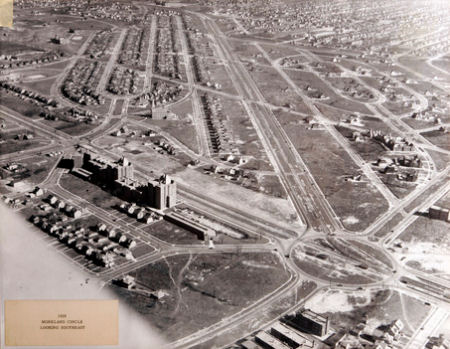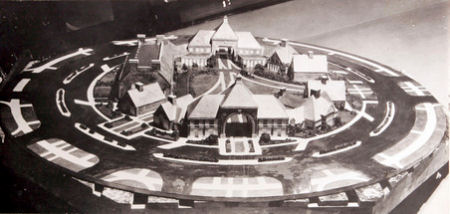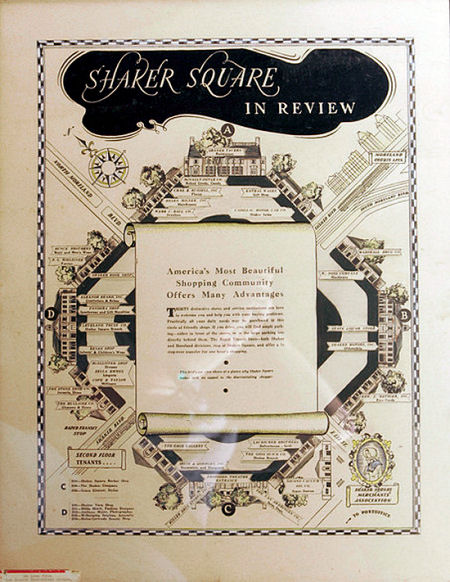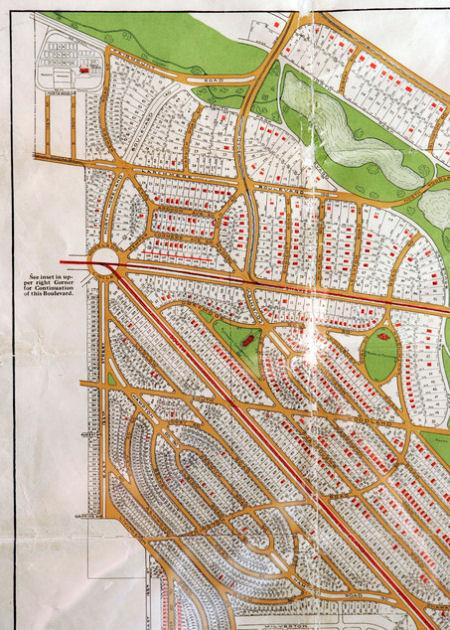Posted on the Plain Dealer blog by reporter V. David Sartin, but no longer available, we've display the text and images we saved years ago. |
|
Shaker
Square is really a Cleveland octagon By V. David Sartin August 31, 2007 |
|
|
|
By August 1927, the old traffic circle was flattened to provide parking spaces around the new Shaker Square. |
|
One of the oddest place-names in Greater
Cleveland is Shaker Square.
It's not in Shaker Heights, but in
Cleveland.
It's never been square. It's an octagon
that was once a traffic circle. |
|
|
|
Formerly known as Moreland Circle, the area that is today's Shaker Square was designed for shops and offices that would form a gateway to Shaker Heights. In this 1926 aerial photo looking southeast, much of the land near the old Moreland Circle was owned by the development company that designed and built Shaker Heights. |
|
In the 1920s, brothers O.P. and M.J.
Van Sweringen began developing Shaker Heights. With precise designs,
building restrictions, land use patterns, color schemes and other
features, the Vans sought to create one of the nation's first
planned communities, complete with commuter trains between the
suburb and downtown Cleveland. |
|
|
|
Planners rejected a 1927 design for Shaker Square that put retail and other offices inside the traffic roundabout. The design would limit future growth along the perimeter, they said. That led to the historic Moreland
Courts apartments along Shaker Boulevard east of today's Shaker
Square. |
|
|
|
An undated promotional poster for Shaker Square lists a state liquor store, an Oldsmobile auto dealership, a Cadillac dealership, a Bunce Brothers men's clothing store and Shaker Tavern among other retailers. Moreland Circle, built between 1918
and 1920, separated electric trains and their tracks from auto
traffic. Originally, what is now the Blue and Green rapid lines
split inside the circle. That split has been moved several hundred
feet east. |
|
|
|
In a 1922 map showing parcels for sale by the Van Sweringen Company, Shaker Square had not been formed. It was then called Moreland Circle and was designed to separate vehicles from rapid transit lines. Notice that the Rapid lines split inside the circle. That feature was later dropped when the split was moved east. |
|
Photos courtesy
Shaker Historical Society,
with permission. |
